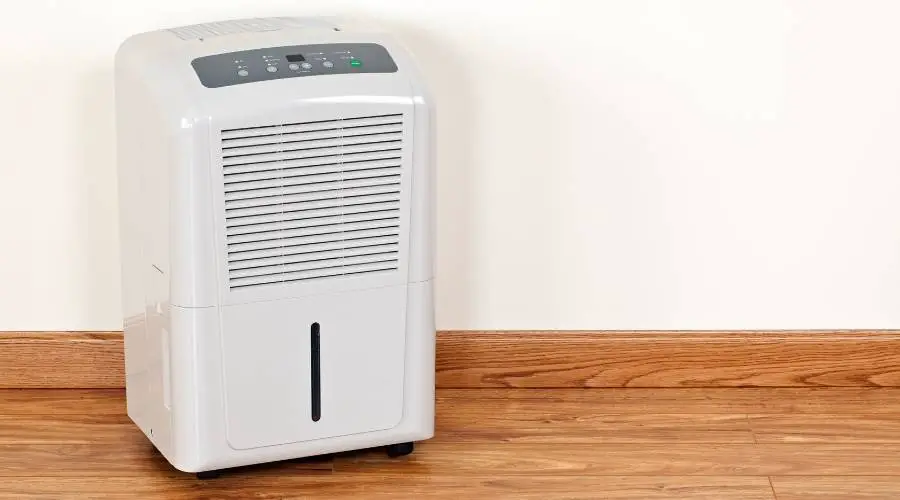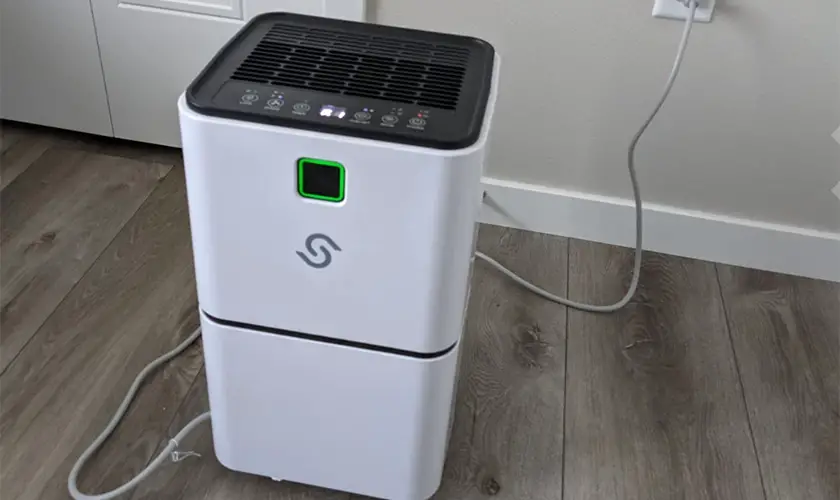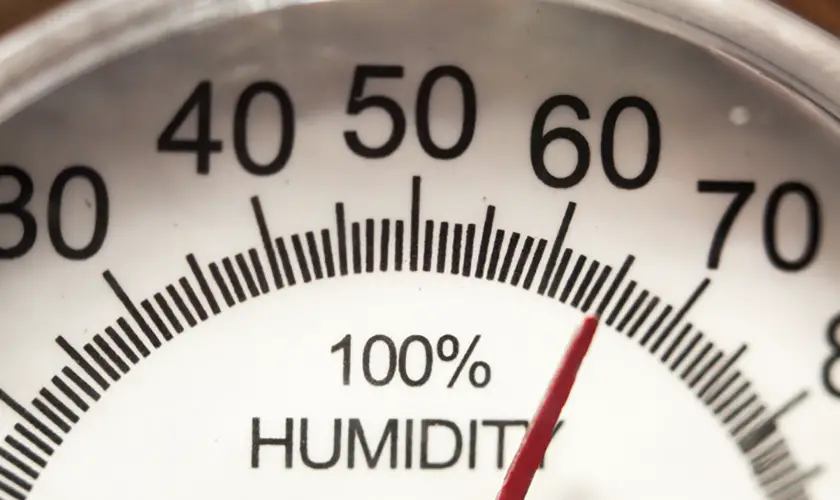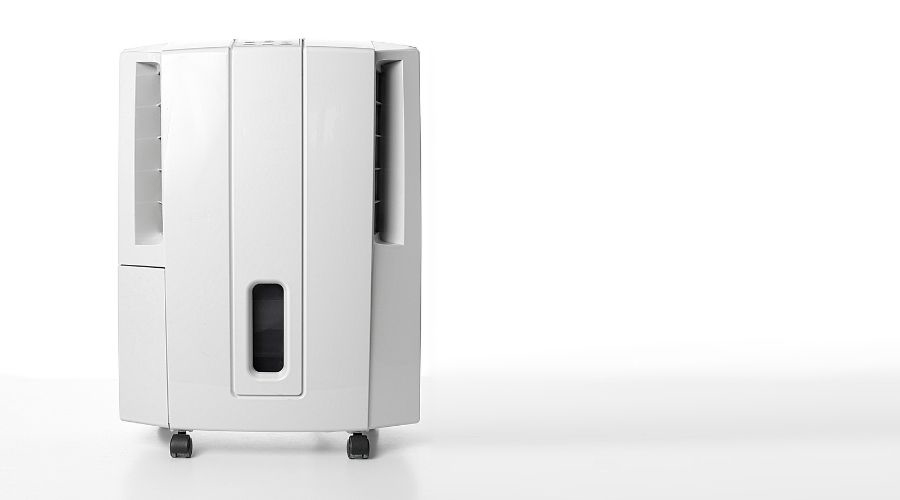
Often, we are introduced to areas in our lives that would benefit from using a dehumidifier. Still, some of these strange locations may not be easily accessible to your common-sized ones, much less useful due to those constraints. Thankfully there is a solution to those hard-to-reach places in the form of portable, rechargeable dehumidifiers, and before we continue, yes, they do indeed exist.
However, one may be asking themselves if you can recharge a portable dehumidifier?
You can recharge a portable dehumidifier. You can do so many ways, such as charging stands and places to plug them in if they contain a battery. Alternatively, you can charge your dehumidifier in a more modern way. These can be done with silicone beads with a charging base.
These cutting-edge little wonders are fantastic for places like cabinets, wardrobes, boxes, or even cars! Before we dive into this topic at length, it’s worth mentioning that there are limitations on these due to size, and power requirements, so bear that information in mind before making your purchase.
Can You Recharge A Portable Dehumidifier?
You certainly can, and there are a wide variety of methods you can use to charge them. Some operate on your traditional charging stand base types, where you plug some aspect of the dehumidifier, often the battery, to the wall and charge it, placing it back for future use.
More modern types, like the Afloia, use a unique silicon bead system with a charging base independent of its primary function that uses heat to remove the moisture from the beads before reusing.
That being said, you want to read up on your specific unit’s method of recharging because not all portable dehumidifiers are built the same. These differences may have specialized safety features or a lack of which could yield less desirable results.
Is It Worth Recharging A Dehumidifier?
This is all dependent on your needs and uses of the dehumidifier. If you are no longer in need of it, then hypothetically speaking, you wouldn’t necessarily need to recharge it.
Still, the idea you would want to work with is that it’s better to be prepared than without. While you might not need the device after the initial use, you probably didn’t buy to use it once and throw it away.
As such, it makes much more sense to charge it for the inevitable time when you will need or want to use it again, instead of needing it, then letting it charge before you can use it.
The train of thought employed here is if it were a time-sensitive situation. This is where you had to leave immediately and bring the dehumidifier to a different location or couldn’t wait. Make sure to take the extra time required and charge it; when you are finished to save yourself time and hassle!
How To Recharge A Dehumidifier
As we touched base on earlier, this depends mainly on what kind of portable dehumidifier you have. Still, there are essentially three different charging stations that you would have to be knowledgeable on.
- Step 1: The first of which would be the corded variant. These dehumidifiers work independently on an internal battery system that expires after being used for a set amount of time.
- Step 2: Afterward, you will need to plug the base into an electrical outlet and charge it back to the capacity to use it again.
This is the most common portable dehumidifier by far and, to an extent, the easiest and most straightforward to operate and understand. - Step 3: Next, we have the battery-based version of the dehumidifier. This one has one, sometimes two, swapping out that function similarly to the previous one.
When all the energy in the battery has been used, you remove the battery and place it on a charging stand typically provided alongside the initial purchase. It’s worth noting occasionally, some products are more gimmick-based than others and may require a secondary purchase for the charging station.
This is a rare occurrence, but it can happen, so be sure you have all the necessary parts to guarantee your dehumidifier can be there when you need it. - Step 4: Finally, we have a free-standing base charging station. This one is more or less a combination of the battery and traditional corded charging method, in that the primary dehumidifier will function independently of the charger.
Still, once the power is gone, you will need to move the dehumidifier to a smaller base and set it on this base for a given amount of time before you can reuse it.
These kinds of dehumidifiers have cropped up more recently. They have been gaining several new features regarding where they can be utilized and, at times, being more eco-friendly due to newer technology.

What Type Of Dehumidifiers Need To Be Recharged?
1. Desiccant Dehumidifier
This kind of dehumidifier uses a silica gel that alternates in color to indicate whether or not it needs to be charged to be fully functional again.
The colors themselves indicate how much moisture has been absorbed by the gel and usually deviate from orange to green. Still, the dehumidifier can show color variations like blue, black, and other darker shades. Desiccant dehumidifiers don’t recharge while they are plugged in, either.
You “recharge” the device to heat the silica gel inside the unit to a point where it can absorb moisture once again. On average, the charging process can take between 8-10 hours, so it’s worth planning your day around it and when you would want or need the dehumidifier operating at its fullest.
2. Condensate Dehumidifier
The older, more traditional of the two, the condensate utilizes one of two methods: refrigerant or coolant, and in most cases, you do not need to recharge these devices at all. A select few still utilize this more outdated kind of functionality that still exists.
If you need to recharge your unit, you more than likely won’t be handling it personally and will need to reach out to a certified HVAC company to do it for you.
This is primarily due to specialized chemicals being required to recharge the machine, and as such, you need the license needed to handle these materials.
How Should You Charge A Refrigerant Dehumidifier?
The short and sweet version of this is that you can’t. Not for lack of trying, but more so that it isn’t safe for you to do so. As we said above, recharging a refrigerant unit means you need to handle chemicals and parts you will likely be unfamiliar with.
You will have to go to a professional to get your unit in working order again. Thankfully these techs usually are on an on-call basis, so if your device goes out, they are a phone call away, but on average, this kind of unit lasts for quite a while before needing to be recharged.
When Should You Recharge A Dehumidifier?
You can expect roughly 24 hours of use from most lower-priced units before needing to be recharged again.
Essentially you would want to recharge a dehumidifier when it isn’t removing excess moisture from the air as intended, or at the very least check the other possibilities to ensure it does need to be charged. Like all small or portable units, the overall operating time will be low due to size and battery usage.
It’s worth noting here that there are a few specific things to look for before attempting to recharge your dehumidifier. These can vary but can include the following:
1. Check the humidity level of the room it’s functioning in. If your dehumidifier isn’t working, a few minute adjustments to your settings may need to be made to enable your unit to function again
2. Inspect your fan and motor functionality and check for abnormalities. Anything off may be causing your system to malfunction and, as such, not remove moisture from the air.
3. Check around for any possibility of leaking Freon. If there is one, your unit will work worse than expected or not at all.
What To Do When Recharging Does Not Work?
There are plenty of things for you to do if recharging does not work. Let us go through them real quick.
- Follow your manufacturer’s guide.
- Contact customer support if your product is still under warranty.
- Carefully vacuum and clean the internal coils for any dust and dirt.
- Check and see if the fan is running properly. Listen to any sounds or rattling that may indicate any loose screws are present.
- Make sure the internal compressor is working. If not, contact a professional’s help.
Ways To Avoid Charging Your Dehumidifier
There are many ways to avoid recharging your dehumidifier, and one of the most underestimated of them comes down to simply using the product efficiently and adequately. Suppose you keep everything to code and use it as intended. In that case, your average life expectancy on a dehumidifier can last as long as five years, potentially longer if more exquisite care is given.
When you think of taking care of your unit, this doesn’t necessarily mean making sure you are cleaning filters constantly. Still, the location you are storing it in and how well the upkeep is managed will influence your unit’s longevity.
Another way you can cut down on how often you need to recharge your dehumidifier is by ensuring you are using the right tool for the right job.
Ensure your unit can sufficiently handle the size of the room. This is important because you do not want your unit to work harder to accomplish its job and inevitably break in the process.
Almost every modernized dehumidifier includes a “Smart Humidity” control system that will automatically make minute adjustments over time to get to the current designated humidity level you have selected.
Like the Smart Humidity automation, other safety precautions are in place to protect your unit from overheating and shutting off when the humidity is at sufficient levels, so there isn’t a lot of guesswork involved.
Make sure you do your part in placing it in a safe spot that won’t allow it to take unnecessary damage over time.
How Many Years Do Dehumidifiers Last?
In this case, recharging a dehumidifier is technically considered as reaching the end of its lifespan. This is because recharging a dehumidifier can be more expensive than the dehumidifier if you work with a refrigerant-based version.
If not, your dehumidifier will last for roughly five years before an integral part needs to be replaced or something just as costly.
Keep in mind that how you handle and operate the unit itself will heavily govern a few things:
- The lifespan.
- Poor usage.
- Bad maintenance on smaller wear and tear will take its toll on the overall expectancy of the unit.
If you want it to last longer, put more effort into the dehumidifier’s well-being.
Final Thoughts
Nothing lasts forever, and eventually, you will need to recharge your dehumidifier at some point, or something more catastrophic happens, needing you to replace it entirely.
Either way, it’s better to be prepared for the worst but ease the transition into that process by keeping up with what you can in terms of changing your filter, storing it in a good location, and buying a dehumidifier that can handle the humidity levels of the room it’s in.







